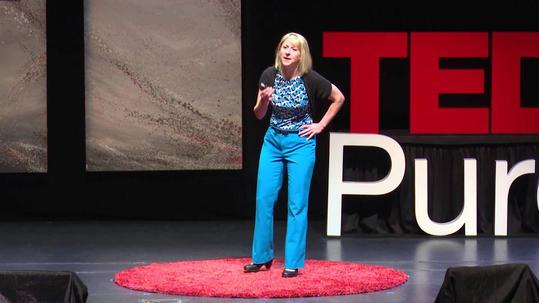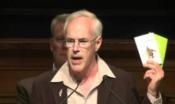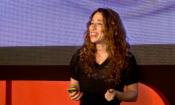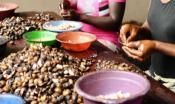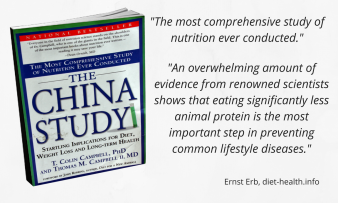Reverse Type 2 Diabetes. Ignore Guidelines | Sarah Hallberg
As an obesity doctor, Sarah Hallberg has dedicated her career to working with people who struggle with this condition. As a result, she understands the stigma and prejudices associated with this category of patients. The typical attitude (among medical personnel as well) is that these people are to blame for their condition — for the fact that they can’t control themselves or their lack of motivation to change. Hallberg states that it is instead the medical system and the nutritional advice provided that are to blame.
01:04: Obesity is a disease. It’s not something created by lack of character. Hallberg considers obesity a hormonal disease that is associated mostly with the hormone “insulinum.” She explains that blood sugar cannot enter the cells anymore because the body becomes resistant to this hormone. And then more of this hormone is produced in response, and the body manages to function optimally for a certain period of time. But at a certain point, the body reaches its maximum capacity for producing this hormone, and sugar starts to accumulate in the blood. This is when people develop type 2 diabetes. However, a significant number of people spend decades with an elevated level of “insulinum” (16–25 % of people with normal weight are insulinresistant).
03:50: What if we didn’t have so much glucose around that would trigger the production of this hormone? Hallberg shows the impact each macronutrient has on glucose levels and concludes that eating carbohydrates leads to a spike in glucose. The reaction is less intense when it comes to proteins and almost nonexistent when people consume fats. A real-world example: the American version of Chinese food is prone to create a steep increase in glucose levels (triggering insulinproduction and leading to hunger, fat storage, and cravings).
05:26: The usual recommendation for people with type 2 diabetes is to consume 40–60 % carbohydrates at each meal. Unfortunately, this is precisely what causes the spike in glucose. At its root, diabetes is a case of carbohydrate toxicity, and insulinresistance is a state of carbohydrate intolerance. Unfortunately, the American Diabetes Association (ADA) guidelines reinforce a vicious circle: eat carbs, take medication to reduce the sugar in the blood, eat more carbs to compensate for the side effects of the medication, use medication again. Sadly, the guidelines don’t even take into consideration the possibility of reversing type 2 diabetes.
07:40: In most cases, type 2 diabetes can be reversed, especially if we start early. Hallberg makes a couple of bold affirmations, such as we don’t need carbs. Apart from essential amino acids and essential fatty acids, there are no other mandatory requirements for survival. A nutrient is essential if we need it to function, and our body can’t produce it. Based on this logic, because our body produces glucose (gluconeogenesis), we don’t need to get this macronutrient from food.
09:10: Insulinresistance is one of the leading causes of coronary artery disease (responsible for 42 % of heart attacks). Low-carb diets help people with diabetes to reduce their medication intake within a couple of weeks.
11:11: Low carb doesn’t mean “zero carb” or high protein. Fat is the only macronutrient that will keep glucose and "insulinum" levels under control.
Dietary rules to keep glucose levels under control:
- Avoid products advertised as low fat because producers replaced the fats that have been removed with carbs or chemicals.
- Eat real food that doesn’t come in a box and doesn’t need to be advertised as “natural.”
- Don’t eat things you don’t like.
- Eat when you are hungry.
- Avoid GPS (grains, potatoes, and sugar).
14:34: Hallberg talks about the randomized control trials that support a low-carb diet. Along with reducing the risk of diabetes, this diet also decreases the risk of cardiovascular diseases and inflammatory markers. A comparative study on 50 diabetic patients who followed the ADA guidelines and 50 patients who followed a low-carb diet showed that the ADA group had to increase their medication intake by over 300 units. In contrast, the other group decreased it by almost 500 units per day.
A significant benefit of this diet is the cost savings for the patients, the insurance companies, and the government.
16:45: Type 2 diabetes can be approached from two perspectives: as a progressive disease that with time will require more medication or as a disease that is reversible once the cause is eliminated. Unfortunately, given the many agendas involved and the status quo, the first perspective is more commonly held by doctors and patients alike.
Find out more about detailed dietary guidelines to reverse type 2 diabetes here. Given the significant role of fats in low-carb diets, it is also important to distinguish between healthy and unhealthy fats and to understand the role of fatty acids in the human body.
More videos
To understand health and ecology, extensive basic knowledge is required. Here you will find fact-based texts and book reviews.
Due to a lack of knowledge, vegetarians, vegans, and raw foodists often eat unhealthily – for years or even decades. This basic knowledge can prevent this.
The China Study clearly lays out how the current Western diet can be improved to prevent lifestyle diseases. We say: Most important book on nutrition and health
Erb Muesli with Rolled Oats is a vegan (lactose-free), raw muesli. It serves as an especially healthy breakfast and is a good “bread replacement.”
These Cucumber Rolls with “Goat’s Cheese” and Mint Sauce hold together surprisingly well. They are ideal as an appetizer or finger food.
Sun-dried chili peppers and parsley give the savory pea pancakes a special flair. We recommend trying the pancakes with curry.

